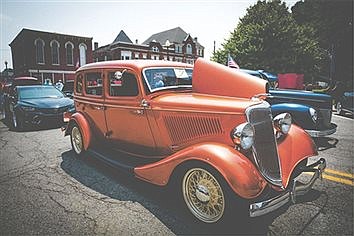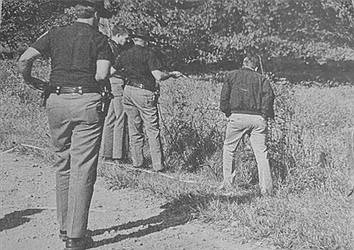The interesting history of St. Patrick’s Day
March 15, 2023 at 6:08 p.m.

Saint Patrick was a Christian missionary who is said to have converted the people of Ireland to Christianity in the 5th century. The holiday has evolved over time and is now celebrated by people of Irish descent all over the world, as well as by others who simply enjoy the festivities. Celebrations typically involve parades, wearing green, drinking beer, and traditional Irish foods like corned beef and cabbage. But who was Saint Patrick, and why are we drinking green beer in his honor?
Born in Roman-ruled Britain in the late 4th century, Saint Patrick was kidnapped at the age of 16 and taken to Ireland as a slave. He later escaped slavery and became a priest, returning around the year 432 to convert the Irish to Christianity. Before his death on March 17, 461, he is recorded to have established monasteries, churches, and schools. Legend says he drove all the snakes out of Ireland, standing on a hillside and sending them all into the sea.
Often associated with St. Patrick's Day is the shamrock, or three leafed clover. It was first called the “seamroy” by ancient Celts and was considered a sacred as it symbolized the arrival of spring. According to legend, St. Patrick used the plant as a way to describe the Holy Trinity.
The first actual St. Paddy's Day parade happened in 1762 in New York City, even before the US was an official nation. Before the Irish Rebellion against the British in 1798, the color blue was most associated with St. Patrick, as it was featured on ancient Irish flags. But during the Catholic-led uprising, the Irish chose to wear green to oppose the British red, and the song “The Wearing of the Green” was a call to rebellion.
Corned beef and cabbage are a St. Patrick's Day staple, though this was also an American innovation. Ham and cabbage was a popular meal in Ireland, but corned beef offered a cheaper substitute for impoverished immigrants. Irish-Americans living in the slums of lower Manhattan in the late 19th century purchased leftover corned beef from ships returning from the tea trade in China. The Irish would boil the beef three times—the last time with cabbage—to remove some of the brine.
As for the excessive drinking, most historians believe that the holiday's link to booze-filled parties is due to the fact it falls during the season of Lent, when alcohol is often restricted. So sláinte! Which is pronounced a bit like “slawn-che”. Sláinte means “health”, and if you’re really feeling the green, you can say sláinte is táinte (“slawn-che iss toin-che”), meaning “health and wealth!”
Latest News
E-Editions
Events
Saint Patrick was a Christian missionary who is said to have converted the people of Ireland to Christianity in the 5th century. The holiday has evolved over time and is now celebrated by people of Irish descent all over the world, as well as by others who simply enjoy the festivities. Celebrations typically involve parades, wearing green, drinking beer, and traditional Irish foods like corned beef and cabbage. But who was Saint Patrick, and why are we drinking green beer in his honor?
Born in Roman-ruled Britain in the late 4th century, Saint Patrick was kidnapped at the age of 16 and taken to Ireland as a slave. He later escaped slavery and became a priest, returning around the year 432 to convert the Irish to Christianity. Before his death on March 17, 461, he is recorded to have established monasteries, churches, and schools. Legend says he drove all the snakes out of Ireland, standing on a hillside and sending them all into the sea.
Often associated with St. Patrick's Day is the shamrock, or three leafed clover. It was first called the “seamroy” by ancient Celts and was considered a sacred as it symbolized the arrival of spring. According to legend, St. Patrick used the plant as a way to describe the Holy Trinity.
The first actual St. Paddy's Day parade happened in 1762 in New York City, even before the US was an official nation. Before the Irish Rebellion against the British in 1798, the color blue was most associated with St. Patrick, as it was featured on ancient Irish flags. But during the Catholic-led uprising, the Irish chose to wear green to oppose the British red, and the song “The Wearing of the Green” was a call to rebellion.
Corned beef and cabbage are a St. Patrick's Day staple, though this was also an American innovation. Ham and cabbage was a popular meal in Ireland, but corned beef offered a cheaper substitute for impoverished immigrants. Irish-Americans living in the slums of lower Manhattan in the late 19th century purchased leftover corned beef from ships returning from the tea trade in China. The Irish would boil the beef three times—the last time with cabbage—to remove some of the brine.
As for the excessive drinking, most historians believe that the holiday's link to booze-filled parties is due to the fact it falls during the season of Lent, when alcohol is often restricted. So sláinte! Which is pronounced a bit like “slawn-che”. Sláinte means “health”, and if you’re really feeling the green, you can say sláinte is táinte (“slawn-che iss toin-che”), meaning “health and wealth!”





